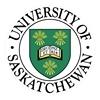Explore all the information on
Artificial insemination in dairy cattle
Welcome to the page about Artificial insemination in dairy cattle of Engormix; a source of knowledge on Artificial insemination in dairy cattle.
Comments related to #Artificial insemination in dairy cattle
Top 10 content about #Artificial insemination in dairy cattle
















